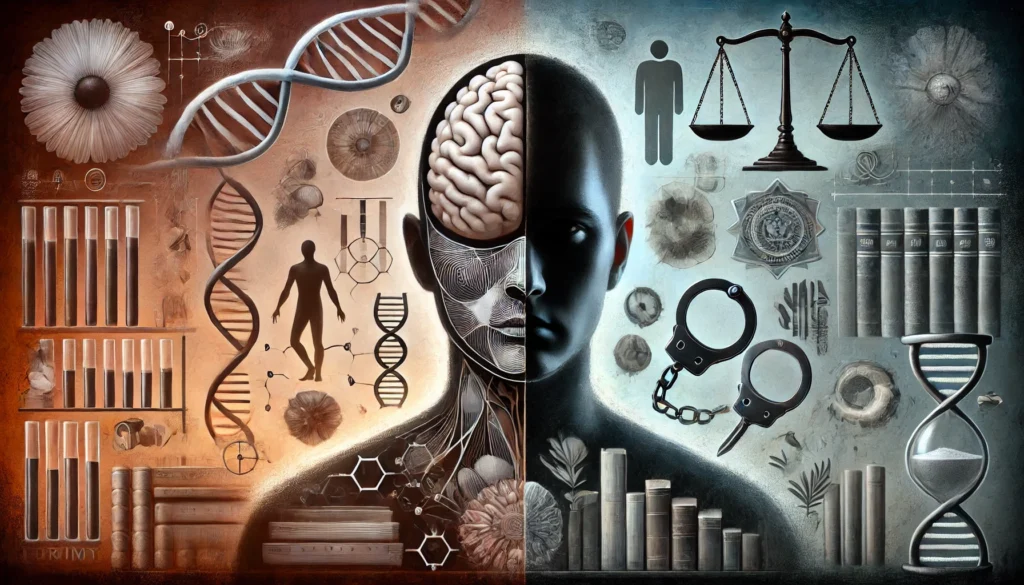Criminal anthropology and criminology are two interconnected disciplines that examine the causes and implications of criminal behavior. While criminology provides a broad analysis of crime and justice, criminal anthropology delves into the biological and physiological traits of individuals that might predispose them to criminal activity. This article explores the definitions, intersections, and importance of these fields, emphasizing their role in modern criminal justice and crime prevention strategies.
What is Criminal Anthropology?
Criminal anthropology is a branch of anthropology that studies the physical, biological, and genetic traits of individuals to understand their potential link to criminal behavior. Originating in the late 19th century, it was pioneered by scholars such as Cesare Lombroso, who introduced the controversial theory of the “born criminal.”
Key Concepts in Criminal Anthropology:
- Atavism: The idea that some individuals exhibit primitive traits that predispose them to criminality.
- Physiognomy and Phrenology: Early theories linking physical features or skull shapes to personality traits and criminal tendencies.
- Modern Approaches: Genetic studies and neurobiological research exploring links between DNA, brain function, and behavior.
Criticism and Evolution:
While early theories in criminal anthropology have been largely debunked, modern research integrates genetics, neuroscience, and psychology to study crime in a more scientific and ethical manner.
What is Criminology?
Criminology is the scientific study of crime, criminal behavior, and the societal responses to these phenomena. It encompasses a multidisciplinary approach, drawing from sociology, psychology, law, and anthropology.
Key Areas in Criminology:
- Theoretical Criminology: Explores theories explaining criminal behavior, including classical, biological, psychological, and sociological perspectives.
- Applied Criminology: Focuses on practical applications like law enforcement, rehabilitation, and crime prevention.
- Comparative Criminology: Studies crime across different cultures and legal systems.
Objectives of Criminology:
- Understand the causes of crime.
- Develop methods for crime prevention.
- Analyze the effectiveness of criminal justice policies.
Differences Between Criminal Anthropology and Criminology
| Aspect | Criminal Anthropology | Criminology |
|---|---|---|
| Focus | Biological and physical traits of criminals. | Broader study of crime and justice. |
| Approach | Primarily biological and physiological. | Multidisciplinary: includes sociology, law, etc. |
| Objective | Identify potential biological links to crime. | Understand and prevent crime. |
Intersections Between Criminal Anthropology and Criminology
Although distinct, these fields often intersect:
- Understanding Criminal Behavior: Combining biological and sociological insights provides a comprehensive view of crime.
- Policy Development: Insights from both fields inform policies for crime prevention and offender rehabilitation.
- Research Integration: Modern criminology incorporates biological aspects studied in criminal anthropology to address complex criminal behavior.

Applications in Modern Criminal Justice
1. Crime Prevention
- Criminology helps identify societal factors contributing to crime.
- Criminal anthropology studies genetic and neurological predispositions to prevent repeat offenses.
2. Rehabilitation Programs
- Combining sociological and biological insights aids in designing effective rehabilitation programs.
3. Profiling and Forensics
- Criminal anthropology contributes to offender profiling.
- Criminology informs forensic investigations through psychological and sociological analyses.
Challenges and Ethical Considerations
Both fields face challenges, including:
- Ethical Issues: Early criminal anthropology theories faced criticism for promoting stereotypes and biases.
- Complexity of Crime: Crime cannot be attributed solely to biology or sociology; a holistic approach is necessary.
- Modern Integration: Balancing biological research with societal factors remains a challenge.
Future Trends in Criminal Anthropology and Criminology
- Technological Advancements: Using AI and neuroscience to study criminal behavior.
- Interdisciplinary Research: Combining genetics, sociology, and psychology to address crime comprehensively.
- Restorative Justice: Emphasizing rehabilitation and community involvement.
Conclusion
Criminal anthropology and criminology are essential disciplines for understanding the multifaceted nature of crime. While criminology offers a broad perspective, criminal anthropology provides specific insights into the biological aspects of criminal behavior. Together, they contribute to more effective criminal justice systems, helping create safer and more equitable societies. By integrating modern research and ethical practices, these fields continue to evolve, offering innovative solutions to age-old questions about crime and human behavior.

